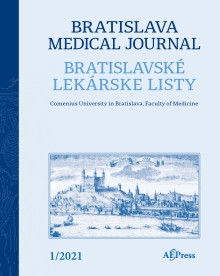Journal info
|
||||
Select Journal
Journals
Bratislava Medical Journal 2024 2023 2022 2021 2020 2019 2018 2017 2016 2015 2014 2013 2012 Ekologia - Ecology Endocrine Regulations General Physiology and Biophysics Neoplasma Acta Virologica Studia Psychologica Cardiology Letters Psychológia a patopsych. dieťaťa Kovove Materialy-Metallic Materials Slovenská hudba 2025Webshop Cart
Your Cart is currently empty.
Info: Your browser does not accept cookies. To put products into your cart and purchase them you need to enable cookies.
Bratislava Medical Journal Vol.125, No.12, p 785–789, 2024 |
||
| Title: Computational neuroscience as a tool for studying neurons | ||
| Author: Michal SABO, Martin KOPANI | ||
| Abstract: OBJECTIVES: Computational neuroscience uses a neuron model to investigate the behavior of a neuron under different stimuli e.g. magnetic field. The aim of the study is to investigate the effect of conductivity change of sodium (Na+) and potassium (K+) ion channels on the generation and course of action potential, excitability and firing rate of neuron. METHODS: HHSim (Hodgkin-Huxley) graphical simulator was used for investigation of generation and firing rate of action potential (AP) and investigation of neuronal excitability. RESULTS: Na+ channel downregulation of conductance reveals a decrease of AP amplitude, and upregulation an increase of amplitude. Higher conductance of Na+ channel leads to higher firing rate from the value 53 HZ to 66 Hz. K+ channel downregulation of conductance reveals an increase of AP amplitude. Lower conductance of K+ channel leads to higher firing rate from the value 62 HZ to 68 Hz. K+ channel upregulation of conductance shows a decrease of AP amplitude. CONCLUSION: From the results it can be drawn that effect of conductivity change as a result of magnetic field is significant and can leads to change of neurons. uman brain cultures, often termed “glia-like” cells (Tab. 4, Fig. 6, Ref. 21). |
||
| Keywords: ion channels, conductance, action potential, magnetic field | ||
| Year: 2024, Volume: 125, Issue: 12 | Page From: 785, Page To: 789 | |
| doi:10.4149/BLL_2024_120 |
||
|
|
 download file download file |
|

